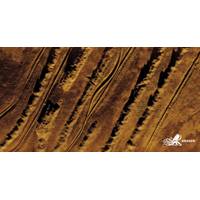
Kraken Joins Forces with US Navy for SAS Sensor Research
Kraken Robotics has signed an agreement with Naval Undersea Warfare Center Division (NUWC) in Newport to conduct joint research into advanced signal processing techniques for the current and future generation of Synthetic Aperture Sonar (SAS) sensor technologies.The cooperative research and development agreement signed between the parties also includes exploration into enhanced image processing techniques such as data fusion, image registration, multi-spectral image enhancement and automated target recognition.Kraken Robotics has engaged in several similar R&D agreements with U.S. government
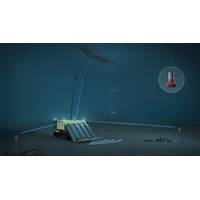
Kongsberg Maritime Launches new HiPAP 602 Ultra Deepwater SSBL Positioning Tool
(up to 7,000m+) and accuracy for positioning ROVs and AUVs, and to operate as a DP reference.To achieve this performance, the HiPAP 602 replaces the spherical transducer used by the HiPAP 502 with a large-diameter, multi-element planar array combined with electronic beam forming and unique signal processing techniques. This enables narrow transmitter and receiver beams to be generated in all directions within the lower half of the transducer, giving the HiPAP 602 high accuracy and long-range capabilities in a cone directly below the unit. This makes it well suited for deep water operation, especially
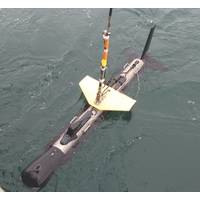
MTR100: Klein Marine Systems, Inc.
from Boston. The System 5900 Multi-Beam Side Scan Sonar represents Klein’s advanced multifunction sonar platform and includes high resolution multi-beam side scan sonar, swath bathymetry sonar, gap filler sonar, and integrated tow body sensor and subsystems. The sonar employs advanced signal processing techniques and superior acoustic design to improve overall along track target resolution. The UUV 3500 was developed as a side scan sonar with the benefit of an advanced bathymetry payload for the AUV, ROV and UUV markets. The Klein Marine Systems HydroChart 3500 is a lightweight, low-cost, wide-swath
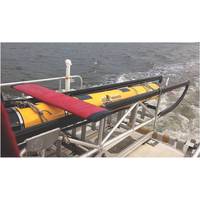
MTR100: Kraken
percent of the cost. Expanding on the successful Synthetic Aperture Sonar (SAS) product line, Kraken is introducing a new underwater system. The Kraken Active Towfish (or KATFISH) is a complete system solution for collecting and viewing SAS seafloor data in real-time. SAS uses sophisticated signal processing techniques to compare multiple observations of the same area of seafloor. The resulting image resolution is significantly increased, often by an order of magnitude, when compared with conventional sidescan sonar. The KATFISH combines the Kraken Miniature Interferometric Synthetic Aperture Sonar (MINSAS)
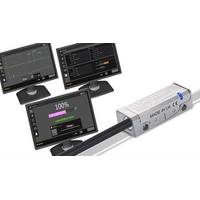
New All-in-one Optical Incremental Encoder from Renishaw
monitoring and diagnostic feedback, according to the manufacturer. The VIONiCplus incremental encoder is the culmination of research into the latest fine compensation architectures and advances in modern optimization algorithms. By leveraging advances in digital interpolation and signal processing techniques, Renishaw has built an encoder with Sub-Divisional Error (SDE) below ±10 nm – unprecedented from a 20 µm-pitch scale. VIONiCplus is the first conventional optical encoder to deliver the performance advantages of ultra-fine pitch (<4 µm) systems with the additional
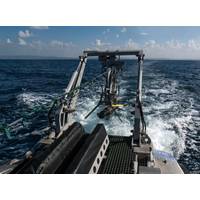
Mine Hunting Sonar Deployed in the Mediterranean
. The 5900 from Klein Marine systems, Inc., is a high resolution, dynamically focused, multi-beam, side scan sonar designed specifically for small object detection with 100 percent bottom coverage, while being towed at speeds up to 14 knots. The system employs advanced signal processing techniques, motion compensation and superior acoustic design to provide exceptional constant high-resolution, motion tolerant imagery performance. Remote control software, Swath Bathymetry and a Nadir Gap Filler capability are subsystem options available on the 5900 System. The Seagull USV
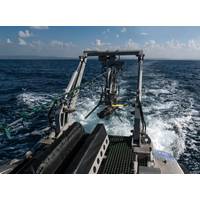
Klein, Elbit Conduct Mine Hunting Exercises
as an MCM sonar. The 5900 from Klein Marine systems, Inc., is a high resolution, dynamically focused, multi-beam, side scan sonar designed specifically for small object detection with 100% bottom coverage, while being towed at speeds up to 14 knots. The system employs advanced signal processing techniques, motion compensation and superior acoustic design to provide exceptional constant high-resolution, motion tolerant imagery performance. Remote control software, Swath Bathymetry and a Nadir Gap Filler capability are subsystem options available on the 5900 System. The Seagull USV

MTR100: L-3 Communications Klein Associates, Inc.
systems. The System 5900 Multi-Beam Side Scan Sonar represents Klein’s advanced multi-function sonar platform and includes high resolution multi-beam side scan sonar, swath bathymetry sonar, gap filler sonar, and integrated tow body sensor and subsystems. The sonar employs advanced signal processing techniques and superior acoustic design to improve overall along track target resolution. The UUV 3500 was developed as a side scan sonar with the unprecedented benefit of an advanced bathymetry payload for the growing Autonomous Underwater Vehicle (AUV), Remotely Operated Underwater Vehicle
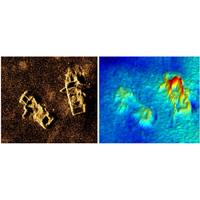
3D Image Fusion for Ultra High Resolution Seabed Surveys
using the sonar platform’s trajectory. The forward motion of the sonar is used to synthesise an array that is much longer than its physical length by combining multiple pings in software rather than adding more hardware as a way to gain higher resolutions. SAS uses sophisticated signal processing techniques to compare the multiple observations of the same area of seafloor to calculate its depth. The image resolution of the seabed is significantly increased – often by an order of magnitude - compared to conventional sidescan sonar. In essence, the resolution becomes independent of range



 February 2024
February 2024





